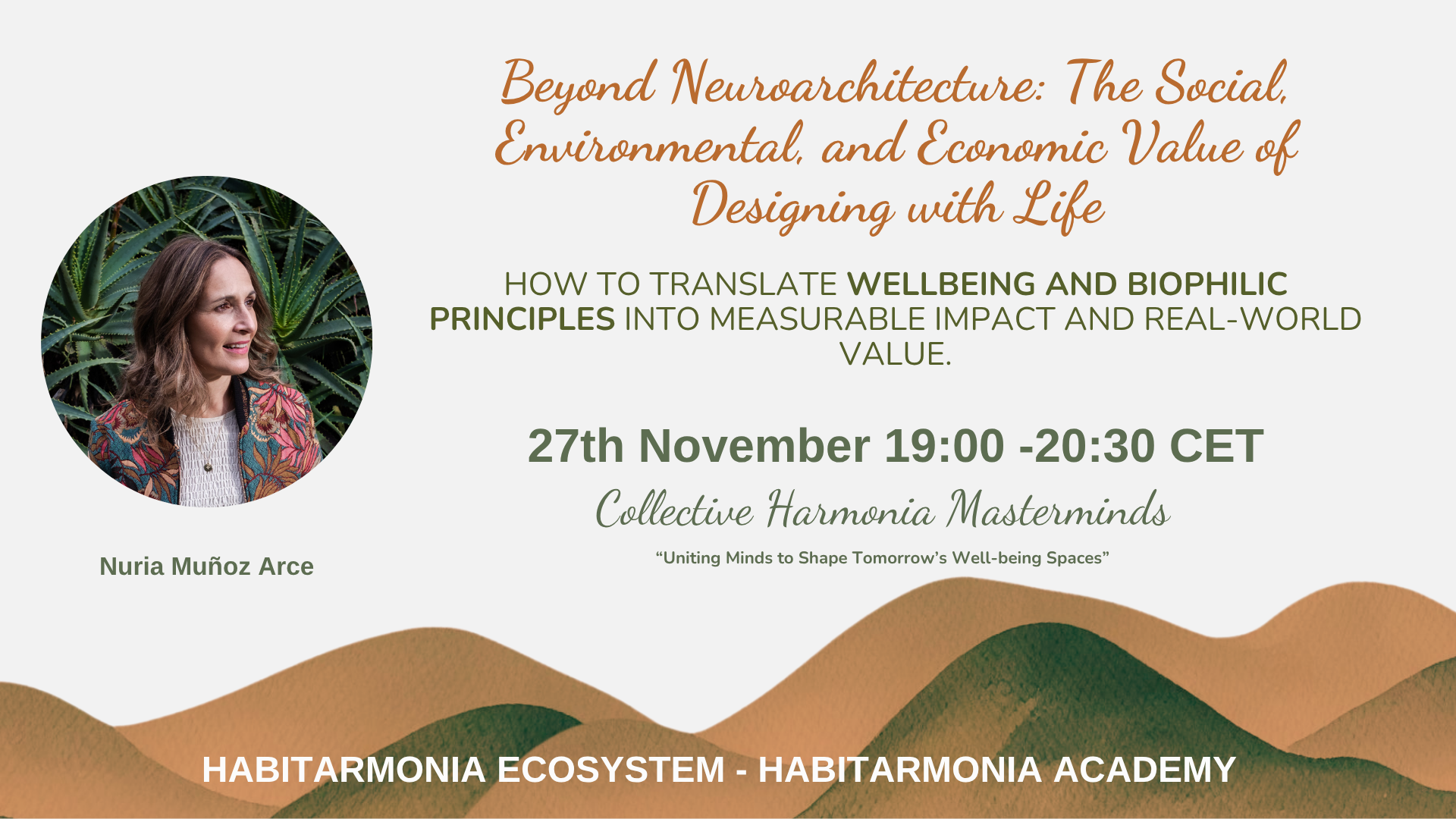How Biophilic Soundscapes can play a great role in the built environment for Neurodiversity
Oct 11, 2022
How BIOPHILIC SOUNDSCAPES can play a great role in the built environment for NEURODIVERSITY
Research says that today, around 15 to 20% of the population is “neurodiverse”. When talking about sense, Sound – in particular, biophilic soundscapes – plays a crucial role in creating neuro-inclusive environments.
Wellbeing Design for neurodiversity
In recent years, designing for neurodiversity has come to the fore. Designers and strategists are realizing that their decisions have a huge impact on the quality of life of neurodivergent people. From a business perspective, companies are also realizing the competitive benefit of creating environments that nurture the unique talents of their neurodivergent employees.
Neurodiversity embraces a range of neurodevelopmental and mental health disorders, such as autism spectrum disorder (ASD), attention deficit hyperactivity disorder (ADHD), dyslexia, and bipolar disorder. Wellbeing design and specially Neurodiverse design aim to create spaces that compensate for some of the negative effects of these disorders, such as problems with communication, information processing, social interaction, and behavior. The concept is applicable to many current priorities and issues, such as well-being and inclusivity.
Neurodiverse design tends to focus on comfort and stimulation. Typical considerations include temperature, lighting, and color. And the tool that we are using in Habitarmonia that’s widely underestimated or unknown: is biophilic soundscapes.
Sound is a crucial part of neurodivergent experiences. Typically, neurodiverse people are either hypo- or hypersensitive to sound–meaning their experiences of soundscapes. Neurodivergent people often have the most to gain from better sound in the built environment. But they may also react acutely to any change. There’s no one size fits with soundscaping, and neurodivergent people will benefit from special attention, ensuring they understand the purpose of new soundscapes as well as their options for control and providing feedback.
Biophilic sound for neurodiversity
Biophilic soundscapes are ambient sound installations from nature. They can enhance three fundamental goals of neuro-inclusive design: concentration, stimulation, and relaxation. These findings are relevant to all types of buildings, including workplaces, homes, schools, and healthcare.
Focus - Concentration
Let's start with focus. Despite the enormous variation within neurodiversity, one trait that recurs is noise hypersensitivity.
It is common in conditions such as ADHD, ASD, and bipolar disorder, and while the trait is not in itself negative, a non-inclusive design can make it so.
For example, people with ASD may be very skilled at pitch differentiation and audio detection, but, in noisy spaces, high sensitivity to noise can easily lead to sensory overload, difficulty understanding speech or concentrating, and distress over unfamiliar sounds.

The solution often used is to install traditional sound masking systems, such as white noise systems. These have been around for decades, but recent studies suggest that continued exposure to white noise may provoke stress responses in the body. On the other hand, nature sounds, such as spring water, have an even better masking capacity than traditional methods and people also prefer them. Biophilic soundscapes are an ideal candidate for enhancing neurodiverse experiences by reducing distractions and sensory overload and improving comprehension.
Stimulation
It is very important to remember that, for neurodiverse people, spaces can also be too quiet. Quiet spaces not only make individual distractions more obvious but also do not provide the stimulation that neurodiverse people often need. Studies of children with ADHD have shown that a background sound level improves their productivity and this is reflected in wider research: silence used to be considered the gold standard, but recent studies have shown that playing biophilic sounds - namely rivers and rain - is even better.
Neurodiverse sound design is not just about reducing sound. We need to create a variety of stimuli, from quiet spaces to those that encourage play, creativity, or curiosity. Better yet, imagine adjusting the stimulation with a switch, or using zonal sound to create localized levels in an open layout... No two neurodiverse people have the same needs, so flexibility and choice are the foundations of positive neurodiverse environments.

Relaxation and stress relief
We are now spending about 90% of our time indoors, which makes us crave more connections with the natural world, especially after the time of the COVID-19 pandemic. In fact, some scientists even link this lack of nature to the growing number of neurodiverse diagnoses. The benefits of spending time outdoors are widely recognized, especially for neurodiversity. Children with ADHD, for example, show fewer negative symptoms after playing in nature.
Many of the benefits of being in nature can be replicated simply by listening to nature's sounds. While it’s no substitute for the real thing, biophilic soundscapes are a proven way to bring the outdoors indoors. A mountain of science now shows that they can improve comfort, physical health, mental health, and social behavior, and reduce stress and anxiety.
After installing a biophilic Pyrenean forest soundscape in a retail shop, a client with high-grade autism got in touch especially because of the sound. She described that normal buildings have contradictory sounds that confuse and disorientate her and that she found the soundscape of nature very soothing.
Design for neurodiversity is better for us all
Designing for neurodiversity can benefit everyone. There is no one-size-fits-all solution for all buildings, especially in complex spaces such as offices, where many different types of people perform many different activities. And noise sensitivity varies even among neurotypical people.
Improving the sound of our spaces with neurodiversity in mind can have universal and inclusive benefits.
It is time to listen more - both to our buildings and to the people who use them - to create buildings that work for everyone.
Learn about our services and courses.
At Habitarmonia we want to spread the word about our passion: create healthy and well-being spaces for our customers!
Stay connected with news and updates!
Add your email to the mailing list to receive information on the latest courses and enrolments.
We hate SPAM. We will never sell your information, for any reason.


